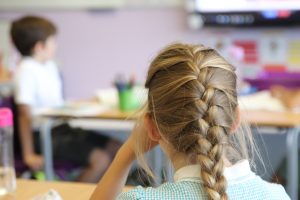
High quality assessment is an essential part of what teachers do in the classroom. From a simple question and answer session to check if students are ready to move on in their learning to a formal examination, teachers are constantly gathering information about their students. The information they gather has a number of uses:
- to help teachers plan
- to let teachers and students understand where they are in their learning and how to move on
- to monitor and track progress
- to trigger intervention
- to provide information for parents
We use Arbor to report this information to parents and students throughout the year, with live data constantly available, and written reports published at set times in the year.
For KS3 subjects progress data will be collected at two points in the year and (for most subjects) be based on a formal in-class assessment. It will be communicated to parents via Arbor
Our intended curriculum is broad and ambitious. Through ongoing and formative assessment, we adapt the pace of the curriculum to ensure that it is sufficiently challenging and supportive for cohorts of students, identified groups of students and individuals. Our aim is for all children to access all elements of their learning and to interleave knowledge so that it is understood, remembered and applied in the longer term. We assess through: Put simply, assessment is there to ask how well the curriculum is being taught and learned. This process is integral to the teaching itself.
How do we generate targets? When your child enters Year 7, we receive their KS2 data, which is then used by an independent external data specialist to generate targets for Year 11. We plot an expected progress trajectory from KS3 into KS4, known as a flightpath, which helps us set benchmarks for each subject. These benchmarks guide us in assessing both knowledge and skills throughout KS3. Each department sets specific benchmarks for grades using KS2 data and KS4 expectations. Our assessments are based on the curriculum, focusing on essential concepts and skills. Over the three years of KS3, your child will develop a deeper and more sophisticated understanding of these areas. Benchmarks are detailed using percentages to define each grade. An example of this may be that a student who was able to attain a KS2 score of 106 might generate a target grade of 7 at GCSE. Our flightpath would indicate that this student should aim to maintain a performance level around 70% or above in their assessments to reach their potential KS4 grade. How do we report to parents? Attainment indicates the current level at which your child is performing, reported as a percentage. It reflects the knowledge and skills demonstrated by your child at this stage. Progress measures whether your child is on track to make expected progress, reported using a colour-coded system. Red indicates significantly below expected progress, yellow indicates slightly below expected progress, green indicates being on track, and purple indicates accelerated progress. How do we assess in KS3? We have two major ‘data drops’ throughout the year, coinciding with assessment weeks. You can find this data on Arbor. The data will outline levels of attainment (percentages) and progress (colours), providing an accurate reflection of your child's consistent effort and knowledge acquisition over time.
Despite a small number of subjects starting GCSE course content in Y9, students in year 9 will still see grades reported in percentages (as stated above).
Class teachers will use GCSE grades (9-1) to report on student attainment. Please refer to the assessment and reporting schedule for the dates of assessments.
Class teachers will use A level grades (A-E) to report on student attainment. Please refer to the assessment and reporting schedule for the dates of assessments.
From September 2024 student report cards will be produced in and distributed via Arbor. These will consist of a numerical system to report on each student’s performance across a range of attributes: engagement, organisation, behaviour and home learning. The wording of the descriptors for this system is below. Each subject will also provide a short ‘next steps’ target. This can be considered to be a main area that the student needs to focus on: more specific feedback is given in lessons so that it can be actioned immediately.


